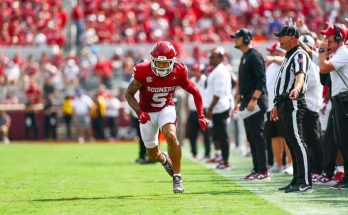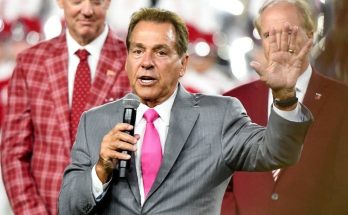**The New York Rangers Will Miss the Playoffs After Winning the Presidents’ Trophy Last Season**
The New York Rangers entered the 2023-24 NHL season with high expectations. After capturing the Presidents’ Trophy in the previous campaign, finishing with the league’s best regular-season record, many believed they were primed for a deep playoff run. However, hockey is a cruel and unpredictable sport, and despite their dominance last year, the Rangers find themselves on the outside looking in this postseason. What went wrong? How did a team that seemed destined for contention fall so far so quickly?
Last season, the Rangers were a powerhouse. Led by Hart Trophy candidate Igor Shesterkin, an explosive offense featuring Artemi Panarin, Mika Zibanejad, and Chris Kreider, and a solid defensive core anchored by Adam Fox, they steamrolled through the regular season. Their 110-point campaign was a testament to their depth, skill, and consistency. However, their playoff run ended prematurely in the first round against the New Jersey Devils, a shocking upset that left fans and analysts questioning whether this team had the mental toughness to win when it mattered most.
Despite that disappointment, optimism remained high heading into this season. General Manager Chris Drury made key moves to bolster the roster, adding veteran leadership and depth. The core was still intact, and Shesterkin remained one of the best goaltenders in the world. On paper, the Rangers looked like a team built to contend for the Stanley Cup.
From the outset, something felt off. The Rangers didn’t come out of the gates with the same dominance they displayed the previous year. Injuries played a role—key players missed time, disrupting chemistry and forcing lineup adjustments. Shesterkin, while still excellent, wasn’t quite the brick wall he had been in 2022-23. The defense, which had been so reliable, showed cracks, with uncharacteristic breakdowns leading to costly goals against.
Offensively, the Rangers still produced, but their scoring wasn’t as lethal. Panarin remained a point-per-game player, but secondary scoring dried up at times. The power play, once a major strength, became inconsistent. Teams adjusted to their system, and the Rangers struggled to adapt.
### **The Midseason Slide**
By the midway point of the season, it was clear the Rangers were in trouble. They hovered around a playoff spot but lacked the consistency needed to secure their position. Losses to weaker teams became a troubling trend. Blown leads, defensive lapses, and an inability to close out tight games haunted them.
Coaching also came under scrutiny. Head coach Gerard Gallant, who had guided them to the Eastern Conference Final in 2022, faced criticism for his lineup decisions and in-game adjustments. Some questioned whether the team had tuned him out, a common issue when a coach’s message grows stale.
The trade deadline was a pivotal moment. Instead of being aggressive buyers, the Rangers made minor moves, signaling a lack of confidence in their ability to make a serious run. While other contenders loaded up, New York stood pat, a decision that would come back to haunt them.
### **The Collapse**
As the season entered its final stretch, the Rangers needed a strong push to secure a playoff berth. Instead, they faltered. A brutal stretch of losses in March effectively ended their hopes. Key games against division rivals—the Devils, Hurricanes, and Islanders—resulted in defeats, leaving them too far back in the wild-card race.
The biggest issue was their inability to win close games. One-goal losses piled up, exposing their lack of clutch performance. The special teams, once a strength, became a liability. The penalty kill struggled, and the power play failed to deliver in crucial moments.
Perhaps most concerning was the team’s lack of identity. Last season, they were a structured, defensively sound team with elite goaltending and timely scoring. This year, they looked disjointed—a collection of talented individuals rather than a cohesive unit.
Several factors contributed to the Rangers’ downfall:
1. **Regression from Key Players** – Shesterkin, while still very good, wasn’t otherworldly like last season. Some forwards saw dips in production, and the defense made more mistakes.
2. **Injuries and Fatigue** – Key absences disrupted rhythm, and the grind of back-to-back deep playoff runs may have taken a toll.
3. **Lack of Adaptability** – Opponents figured out the Rangers’ system, and adjustments were slow to come.
4. **Mental Fragility** – After last year’s playoff failure, confidence seemed shaky in high-pressure moments.
5. **Questionable Roster Decisions** – The front office’s reluctance to make a big move at the deadline left the team without the necessary reinforcements.
Missing the playoffs after winning the Presidents’ Trophy is a brutal reality check. Changes are inevitable. Gallant’s job security is in serious doubt, and the front office will need to evaluate whether this core has what it takes to win.
Potential moves could include:
– **A coaching change** to bring in a new voice.
– **Trading a core piece** to shake up the roster.
– **Targeting more depth scoring** to support the stars.
– **Rebuilding the bottom-six forwards** to improve consistency.
The Rangers have too much talent to stay down for long, but this season serves as a harsh reminder that regular-season success doesn’t guarantee playoff glory. The NHL is a league of parity, and unless a team evolves, it risks being left behind.
For Rangers fans, this year is a bitter pill to swallow. But if history has shown anything, it’s that this franchise has the resources and pedigree to bounce back. The question is: How quickly can they fix what went wrong?
One thing is certain—the pressure to deliver next season will be higher than ever.



